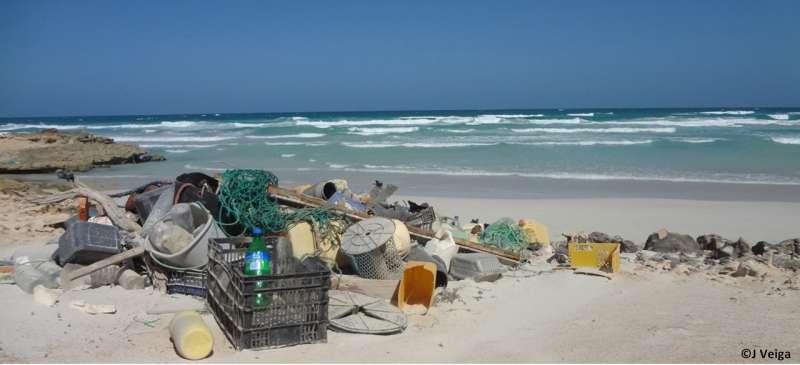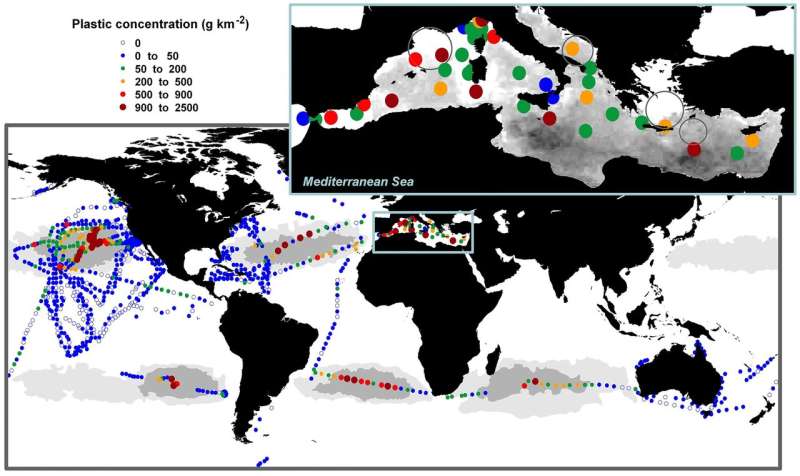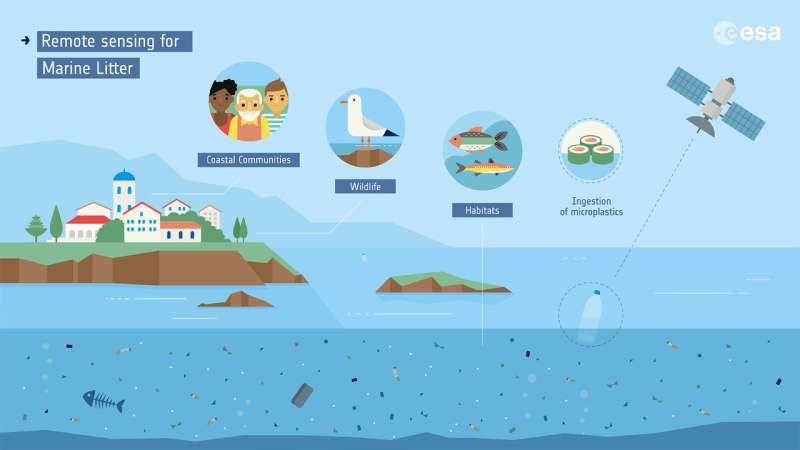ESA testing detection of floating plastic litter from orbit

The millions of tonnes of plastic ending up in the oceans every year are a global challenge. ESA is responding by looking at the detection of marine plastic litter from space, potentially charting its highest concentrations and understanding the gigantic scale of the problem.
We dump around 10 million tonnes of plastic in the oceans annually. Though most conspicuous along coastlines, plastic litter is also found out in the open ocean and from the equator to the pole – even frozen in polar ice.
Gradually broken down into micro-fragments by weathering and waves, it is not only endangering marine animals but it is also entering the global food chain, with unknown long-term consequences for animal life and our own health.
"Indirect measurements from space are already used to get to grips with the marine plastic litter problem," explains ESA's Paolo Corradi, overseeing the project.
"For instance, satellite maps of ocean currents let us simulate accumulation of litter in vast 'gyres' within the Pacific, Atlantic and Indian Oceans.
"What we are now looking at in this new project is to assess the feasibility of direct optical measurement of seaborne plastic waste from satellites. This might sound like mission impossible, but there are reasons to believe it might be indeed doable, at least for certain concentrations.

"We're not talking about actually spotting floating litter items but instead to identify a distinct spectral signature of plastic picked up from orbit, in the same way that processing software can today pick out concentrations of phytoplankton, suspended sediments and water-borne pollution.
"In particular, plastic has specific infrared fingerprints that are sometimes used in the recycling industry to sort plastic items from other refuse on a conveyor belt."
Supported by ESA's Basic Activities, two teams are working in parallel, led by Argans Limited in France and Plymouth Marine Laboratory in the UK. Their work began last September with an initial assessment of requirements and technologies, along with a workshop bringing together marine litter experts with remote sensing specialists.
Satellite images from missions such the Sentinel-3 ocean-colour tracker are being checked against aerial coverage plus ground surveys where drifting plastic is collected from the sea to be assessed in close-up. Initial results were presented last week at the International Marine Debris Conference in San Diego, USA.
Paolo adds, "We hope to get an idea of what kind of concentration of marine litter is viewable from the top of the atmosphere using current technology, or if we'd have to operate from the middle of the atmosphere using aircraft or drones. Or would we have to improve the technology?"

The project will deliver a preliminary set of requirements for a satellite to detect marine plastic litter in the shortwave infrared.
The ultimate goal might be an actual global map showing litter concentrations, concludes Paolo: "Simulations are all well and good, but an image based on actual measurements would provide important insights to scientists and would hold greater power for the public and policymakers alike.
"Monitoring is not a goal in itself, but a means to show the scale of the problem, and start to try and solve it."
More information: Andrés Cózar et al. Plastic Accumulation in the Mediterranean Sea, PLOS ONE (2015). DOI: 10.1371/journal.pone.0121762
Journal information: PLoS ONE
Provided by European Space Agency




















